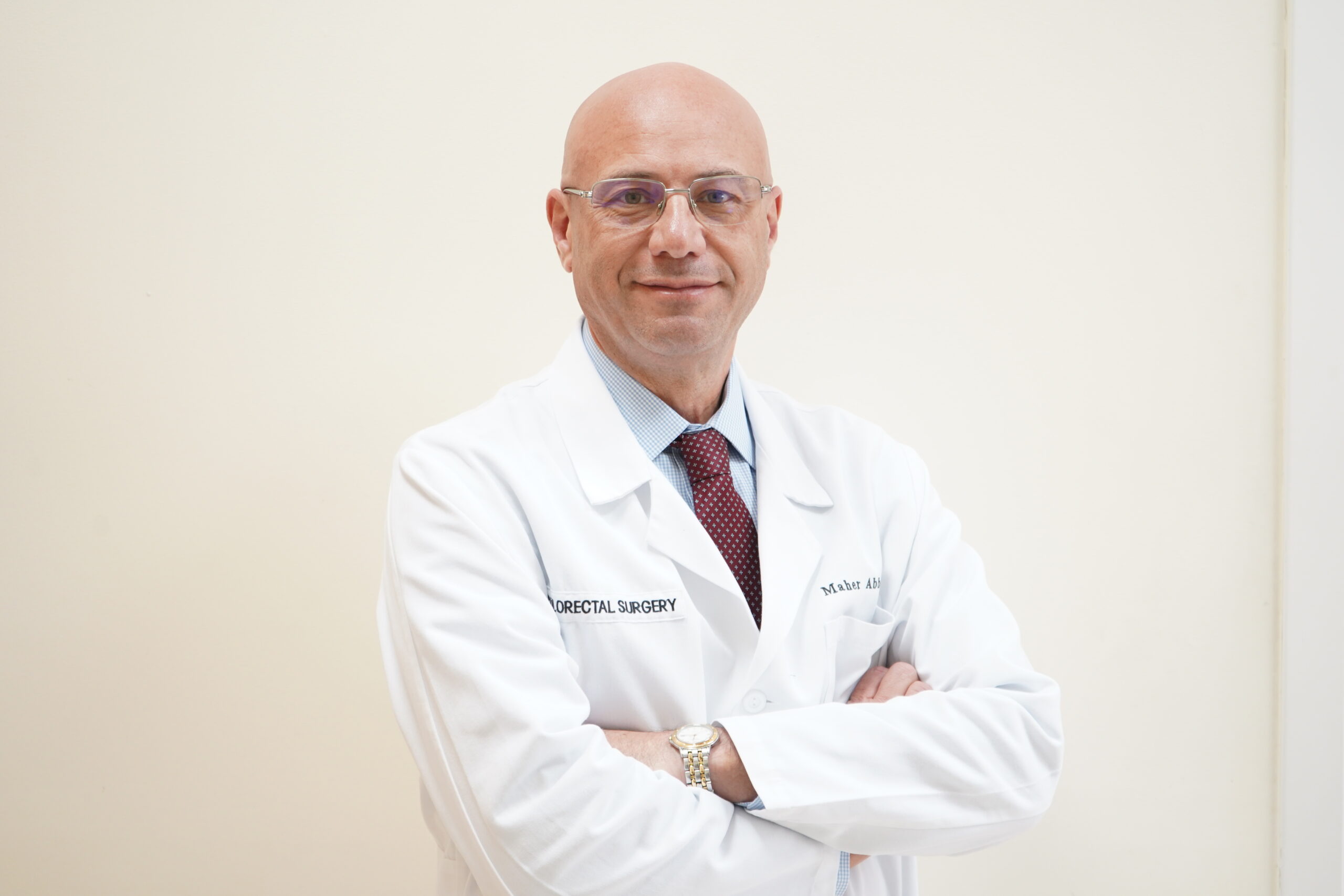Sigmoidoscopy is a procedure that examines the rectum and sigmoid colon to check for inflammation, infection, polyp, tumor, or to assess for healing after a prior operation. Common indications for sigmoidoscopy include bleeding, pain, complex fistula, constipation, change in bowel habits, diarrhea, current or past history of tumors, cancers, or polyps. In addition, sigmoidoscopy can be performed to biopsy a lesion or remove a polyp. The procedure is performed in the endoscopy suite by Dr. Maher Abbas. Depending on your condition, the procedure maybe performed with you awake or after receiving a sedative through your vein. Sigmoidoscopy is performed with you lying on your left side. A small flexible tube with a camera and a light mounted at the tip is inserted through the anus and air is insufflated into the rectum and colon [Figure 1]. The procedure takes 15 minutes or longer depending on your condition.

Figure 1
How do I prepare for the procedure?
If the procedure is done under sedation, you need to fast for 8 hours [no liquid or solid food]. If you take medications for your heart or blood pressure, you can take them as soon as you get up with a small sip of water. If you take medications for diabetes, blood thinners, aspirin, or non-steroidal anti-inflammatory medications (medications used for pain, arthritis, or headaches, such ibuprofen, naproxen, diclofenac, etoricoxib), or have a heart condition, let Dr. Maher Abbas and his nurse know. Prior to coming for your visit, perform 2 Fleet enemas at home [see section on How To Do An Enema]. You can drive yourself to the appointment but if you receive medications for sedation, someone should drive you home.
Kindly arrive 1 hour prior to your scheduled time to avoid cancellation of your procedure.
Post sigmoidoscopy care
Activity
If you receive medications for sedation, it is best to rest the day of the procedure. You can resume your usual activity the following day. If biopsies are taken, avoid strenuous activity or vigorous exercise such as bicycle riding, jogging, weight lifting, or aerobic exercise for 1 week. You can drive starting the following day.
Diet
You can have a regular diet and drink plenty of liquids. If you have nausea, it is best to remain on a liquid diet for the rest of the day.
Medications
You can resume your home medications. If you are on any blood thinner, ask Dr. Maher Abbas for specific instructions. If you have discomfort you can take 1 to 2 acetaminophen 500 mg pill every 8 hours [panadol, paracetamol, tylenol] or start any medication prescribed by Dr. Maher Abbas. Drink plenty of water.
Signs to watch for
If biopsies are taken during the procedure, a small amount of dark blood can be expected with the first bowel movement. Sigmoidoscopy is a safe procedure. A significant complication such as perforation and serious bleeding rarely occur. If any of the following symptoms occurs, contact Dr. Maher Abbas and come to the emergency department immediately:
- Bleeding that does not stop or blood clots
- Severe abdominal or pelvic pain with distention
- Fever with temperature > 38 degrees Celsius
- Shortness of breath or racing heart beats
- Persistent nausea or continuous cramps
Follow-up appointment
The proper follow-up appointment will be scheduled. If medications are prescribed, pick up from the pharmacy and take as instructed. If biopsies are taken, the results will usually become available within a week.
Any questions? Contact Dr. Maher A. Abbas’ office nurse here.


